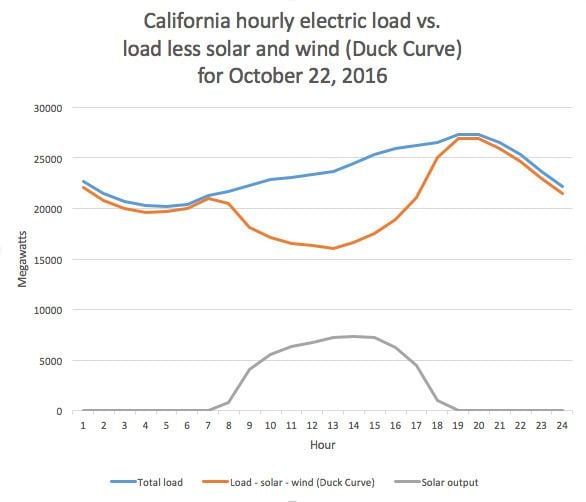 | ||
In commercial-scale electricity generation, the duck curve is a graph of power production over the course of a day that shows the timing imbalance between peak demand and renewable energy production. In many energy markets the peak demand occurs after sunset, when solar power is no longer available. In locations where a substantial amount of solar electric capacity has been installed, the amount of power that must be generated from sources other than solar or wind displays a rapid increase around sunset and peaks in the mid-evening hours, producing a graph that resembles the silhouette of a duck. In Hawaii, the more pronounced curve is known as the Nessie Curve.
Without any form of energy storage, after times of high solar generation generating companies must rapidly increase power output around the time of sunset to compensate for the loss of solar generation, a major concern for grid operators where there is rapid growth of photovoltaics. Storage can fix these issues if it can be implemented. Flywheels have shown to provide excellent frequency regulation. Short term use batteries, at a large enough scale of use, can help to flatten the duck curve and prevent generator use fluctuation and can help to maintain voltage profile. However, cost is a major limiting factor for energy storage as each technique is expensive to produce at scale and comparatively not energy dense compared to liquid fossil fuels.
Mitigation strategies
Methods for coping with the rapid increase in demand at sunset reflected in the duck curve, which becomes more serious as the penetration of solar generation grows, include:
A major challenge is deploying mitigating capacity at a rate that keeps up with the growth of solar energy production. The effects of the duck curve has happened faster than anticipated.
